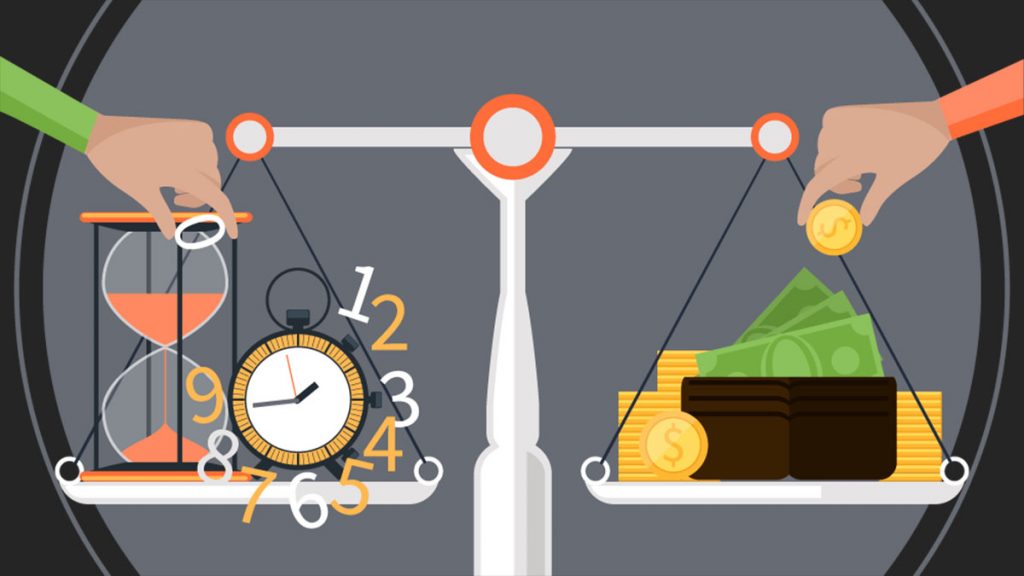Which pricing model is best for your business? Which one will cover your costs and which one will make you millions?
Businesses generally price their products and services around two pricing models, cost-based and value-based.
Let’s have a look at some of the differences.
What is Cost-based Pricing?
In essence, cost-based pricing is all about looking at you and your business and the costs involved in producing that product or service offering.
When a business is setting a cost for products or services, they will generally research three areas:
- The time it takes themselves to produce
- The external costs of materials or services needed
- How much their competitor’s similar offerings are
1. Time
New businesses will have to do a bit of research into how much time it will take them to produce the offering.
This will likely take the format of a cost per hour or a capped daily rate.
Overtime when skills have increased and processes have been put in place, this time will likely decrease.
2. Costs
In order to offer a product or service, it’s highly likely that you will have to purchase something or use some service to put together your offering, hence the external costs.
It’s money you are having to spend, so that needs to be recouped when setting your pricing points if you are looking to make a profit!
3. Competition
If you have no competition, kudos to you for finding an untapped niche!
It is more likely that you will have competitors selling an equivalent product or service.
To compete in this market, businesses will look at their competitors’ pricing levels and decide where to set their own depending on where they see they add value.
Generally, businesses will be pricing into the market at a low, mid or high entry-level compared with existing competition.
Floor and Ceiling Prices
After researching the three areas above businesses will likely come up with:
- A Floor Price
This is the lowest price they can enter into the market to cover their time and costs in order to compete with competitors. - A Ceiling Price
This is the highest price they think their market will pay without losing all potential clients to the competition.
What is Value-based Pricing?
If cost-based pricing is all about you, value-based pricing is 99% about the end customer.
I find that people who are new to starting a business, especially sole-traders or freelancers, find it hard to get into the mindset of value-based pricing.
Value-based pricing is taking your product, service or solution and perceiving the value it will give to the customer, then setting your price point accordingly.
This can take a bit of work to get right and unlike cost-based pricing, you are going to need some information from the potential customer to get it right!
That means talking to potential customers and asking them questions about what problems they need fixing.
Usually, this is done in a discovery workshop or discovery session where you perform a deep dive into the customer’s business and business requirements.
The results from a discovery session should allow you to formulate an investment (“cost”) for your product or solution that the potential customer can see a return of investment (ROI) on.
Pros and Cons of Cost-Based Pricing
Pros
Setting a price based on your time, costs and competitor research is pretty easy.
It just requires some simple math and maybe a few sneaky quotation emails to your competitors to see what prices they come back with.
Covering your expenses is a no brainer and then add on some extra to make a profit.
You don’t even really need to have previous experience or fancy skills to work out a cost-based pricing model.
Cons
Floor prices will generally engage in a costing battle with your competitors, with you trying to generate a large number of sales to offset the low price offering.
It’s highly likely that potential clients will challenge your price because a competitor slightly undercut it.
That’s a dangerous spiral downward into a loss-making venture.
Ceiling prices will drive up profit dramatically but businesses run the risk of pricing themselves out of the market and losing customers to competitors.
It’s also very difficult to pitch for potentially large projects.
Without any justification or return of investment, a potential customer is unlikely to pay you a high price just for your time, especially if a competitor swoops in at a ridiculously low floor price.
Pros and Cons of Value-based Pricing
Pros
Taking your time and effort out of the equation you are free to put a higher price on the project.
Taking the time to do a discovery session with the client allows you to deliver a custom proposal addressing all their pain points.
Your proposal should clearly outline the return of investment that the client is likely to make by investing in your solution.
Your proposals are more likely to be accepted when a client can clearly see that they will not only recoup the project costs but start making a profit in X months from your solution.
Cons
It takes more time and effort to extract the required information from a potential client and that may not be in your skillset yet if you are just starting out.
Discovery sessions are very exhausting and can be time-consuming in cost and effort if a potential client is not willing to pay for one.
You may run at a loss if a potential client doesn’t end up paying for your solution and you haven’t prequalified them correctly.

Which is Right For Your Business?
I can’t answer that for you.
Cost-based pricing is easier to get up and running if you are new to running a business.
If you price right you will cover your costs and make a small profit on each project.
Value-based pricing lets you jump right in at a high price-point allowing to pitch for the return of investment the client could make.
The latter works best if you are more experienced in running a business and dealing with clients.
